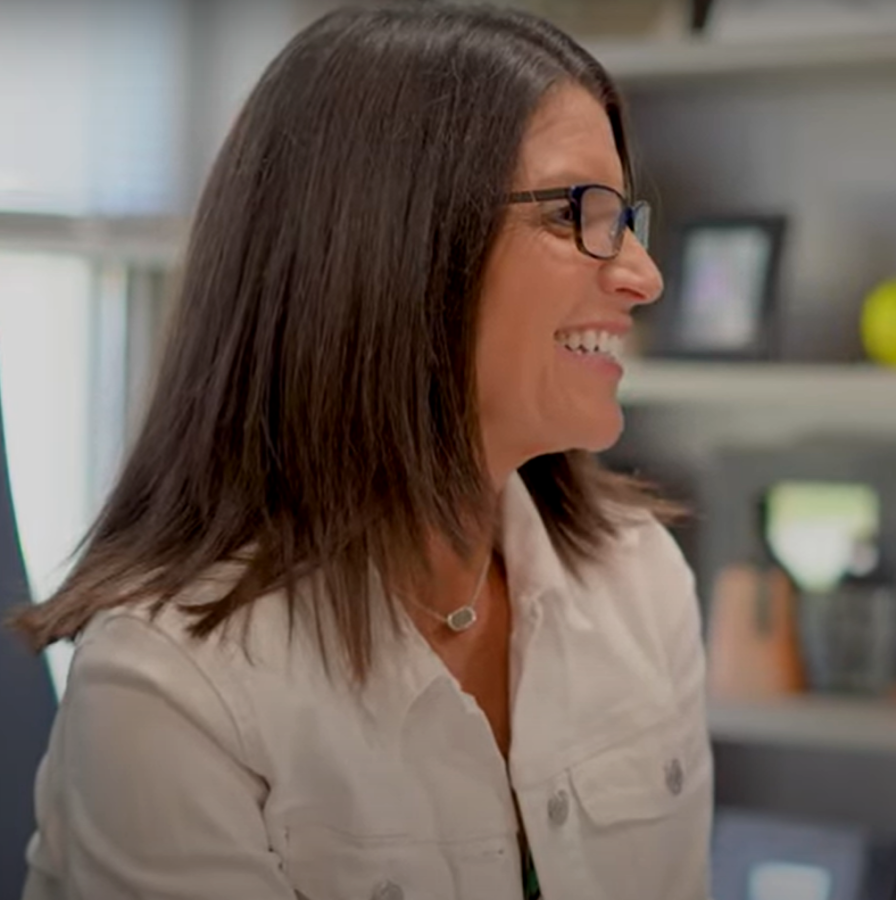Hearing S.O.S. and Answering the Call: Sources of Strength
Peer leaders gather for a photo of the group.
Mental health is slowly becoming destigmatized, but awareness isn’t moving quickly enough. Millions of lives are lost to suicide each year, and young people are no exception. A nationwide program coined Sources of Strength is attempting to decrease death by suicide as they promote emotional well being. Their method is revolutionary because it communicates through not only teachers but students as well.

These students are called “Peer Leaders” and Niva Saravanan, senior, is one of them. In late November, the teenage members were trained to handle stressful and confidential mental health moments alongside Denmark’s volunteer teachers. “It was a very emotional place where we were all vulnerable,” Saravanan said, “I think being a part of that safe space helps me apply it to other places.” Having young people involved in conversations allows them to feel braver when facing issues and lending a hand to others, and since these people are searching peers for signs of suicidal thought, it’s essential that they are secure in their skills. Thankfully, that’s what openness has allowed them to be: secure and supported.
This couldn’t be achieved without adult support though. Ms. Bone, one of the teachers in the organization, is glad to be of service, “If we teach our students to develop their own mental grit and create a network of support, they’re much more likely to come out of a situation stronger, rather than having to suffer for a long period of time.” It may seem exhausting to be a touchpoint for so many, but being involved has benefits for everyone. “I think that it’s just as useful for the adults in the building as it is for the students,” admitted Bone. Even teachers develop skills that allow them to cope with everyday stresses and occasional breakdowns.
All of this was part of counselor Mrs. Carlson’s plan when implementing Sources of Strength at Denmark. “I think the intention of Sources is to, number one, bridge the gap between students,” she acknowledges. But that wasn’t the only bond she intended to weld. Carlson was hoping it would, “help high schoolers realize there are adults in their life that, one, care about them, two, want to see them succeed.” By proclaiming this care, she hoped that students would be able to see teachers as human beings alongside the students. It’s easier to practice a healthy mentality if there’s tenderness in the way people treat each other.
 That’s why generosity is a fundamental piece of the program. Ms. Bone notes it as her favorite factor in Sources of Strength. “It can be something as simple as intentionally smiling at somebody as they pass you in the hallway who looks like they might be having a rough day,” she said, “I think that it’s something that everyone can do on a regular basis and they benefit from it as much as the other person.” She singled this trait out because it is a member of the S.O.S. wheel. The wheel is a visible representation of ways to cope in times of distress and methods to maintain mental health stability. Keep these Sources of Strength in mind while going through this month and in everyday routine. It may become a lifeline.
That’s why generosity is a fundamental piece of the program. Ms. Bone notes it as her favorite factor in Sources of Strength. “It can be something as simple as intentionally smiling at somebody as they pass you in the hallway who looks like they might be having a rough day,” she said, “I think that it’s something that everyone can do on a regular basis and they benefit from it as much as the other person.” She singled this trait out because it is a member of the S.O.S. wheel. The wheel is a visible representation of ways to cope in times of distress and methods to maintain mental health stability. Keep these Sources of Strength in mind while going through this month and in everyday routine. It may become a lifeline.

How do you think the site looks? As you read this, I'm probably tinkering around with it, so say nice things. While awards and merit are important, my...









































